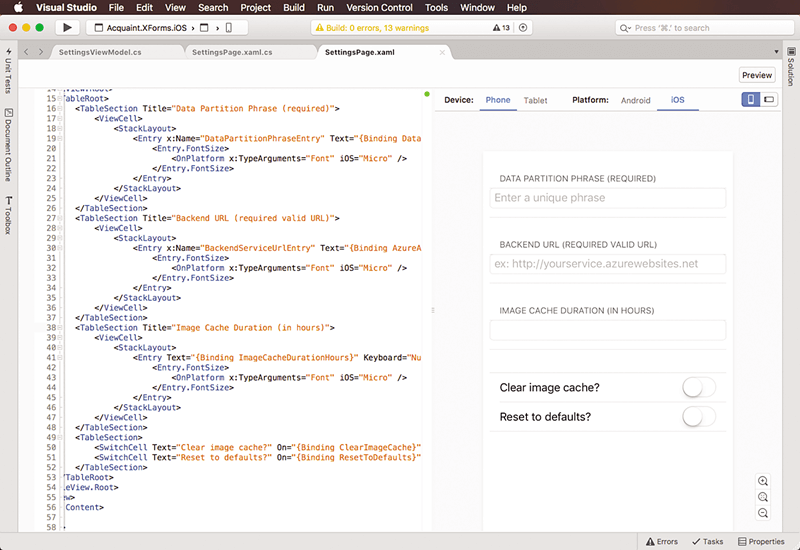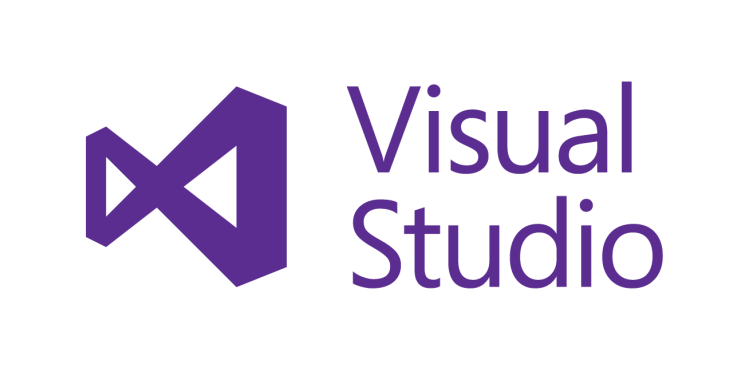Microsoft’s Connect(); 2016 developer event in New York City today had some big partnership announcements, including Google joining the .NET Foundation, Microsoft joining The Linux Foundation, and Samsung launching a preview of Visual Studio Tools for Tizen. But there was also a slew of updates for both Visual Studio and SQL Server: a preview of Visual Studio for Mac, a preview of the next version of SQL Server, and a preview of Azure App Service support for containers.
“We want to help developers achieve more and capitalize on the industry’s shift toward cloud-first and mobile-first experiences using the tools and platforms of their choice,” Microsoft Cloud and enterprise executive vice president Scott Guthrie said in a statement. “By collaborating with the community to provide open, flexible, and intelligent tools and cloud services, we’re helping every developer deliver unprecedented levels of innovation.”
Visual Studio
The fact that Microsoft is bringing its IDE to macOS would have arguably been the biggest news of the day, had the company not leaked the information itself earlier this week. Still, a preview of Visual Studio for Mac is now available (download here, requires OS X El Capitan 10.11 or higher), letting developers write cloud, mobile, and macOS apps on Apple’s desktop operating system using .NET and C#.
It’s a big deal, given that Microsoft once made a point of locking in developers by only offering its tools on Windows. This has changed over time, with a big highlight in April 2015 when Microsoft launched Visual Studio Code, its cross-platform code editor, for Windows, Mac, and Linux.

Now Microsoft is taking the next step: making Visual Studio cross-platform. Inheriting from the mobile-centric Xamarin Studio and from Visual Studio for Windows, the IDE is supposed to encourage Mac and iOS developers to use Microsoft’s development tools, since they will no longer need a Windows computer or virtual machine to do so. It will hit general availability next year, and Microsoft will eventually sunset Xamarin Studio.
Here’s how Xamarin project manager Mikayla Hutchinson described the tool in the leak on Monday:
At its heart, Visual Studio for Mac is a macOS counterpart of the Windows version of Visual Studio. If you enjoy the Visual Studio development experience, but need or want to use macOS, you should feel right at home. Its UX is inspired by Visual Studio, yet designed to look and feel like a native citizen of macOS. And like Visual Studio for Windows, it’s complemented by Visual Studio Code for times when you don’t need a full IDE, but want a lightweight yet rich standalone source editor.
Below the surface, Visual Studio for Mac also has a lot in common with its siblings in the Visual Studio family. Its IntelliSense and refactoring use the Roslyn Compiler Platform; its project system and build engine use MSBuild; and its source editor supports TextMate bundles. It uses the same debugger engines for Xamarin and .NET Core apps, and the same designers for Xamarin.iOS and Xamarin.Android.
Compatibility is a key focus of Visual Studio for Mac. Although it’s a new product and doesn’t support all of the Visual Studio project types, for those it does have in common it uses the same MSBuild solution and project format. If you have team members on macOS and Windows, or switch between the two OSes yourself, you can seamlessly share your projects across platforms. There’s no need for any conversion or migration.
Visual Studio for Mac supports native iOS, Android, and Mac development via Xamarin, and server development via .NET Core with Azure integration. The C# language, with the latest C# 7 productivity enhancements, is naturally supported, as is F#, powered by the same F# compiler used in Visual Studio.
Meanwhile, in the Windows world, Visual Studio 2017 has now hit Release Candidate status (download here). Formerly referred to as Visual Studio “15” (or Visual Studio Next), this version is slated for general availability in early 2017.
But that’s not all for the Visual Studio world. Nat Friedman, Xamarin cofounder and now Microsoft’s vice president of mobile developer tools, also shared some notable milestones with VentureBeat.
Visual Studio 2015 has passed 20 million installs, with 14 million coming from the free community edition. Visual Studio Code passed 3.5 million installs and 1 million monthly active users, up from more than 500,000 in April.
Also worth noting is a preview of a new product called Visual Studio Mobile Center (download here). Think of it as mission control for mobile app developers; it works for all apps regardless of programming language. Here’s the rub: It supports Android and iOS today, while Windows is “coming soon after.”
SQL Server
Microsoft announced the public preview of the next release of SQL Server, which for the first time runs on not just Windows, but Linux, too. The new version lets you develop applications with SQL Server on Linux, Windows, Docker, or macOS (via Docker) and then deploy to Linux, Windows, or Docker, on-premises or in the cloud.
Indeed, all major features of the relational database engine are coming to Linux. Native Linux installations are available with RPM and APT packages for Red Hat Enterprise Linux, Ubuntu Linux, and SUSE Linux Enterprise Server. The public preview on Windows and Linux will also soon be available on Azure Virtual Machines and as images on Docker Hub.
R Services inside SQL Server have gained machine learning functions that are used by Microsoft’s own product teams. You can expect deep neural network functionality with increased speed, performance, and scale, especially for handling a large corpus of text data and high-dimensional categorical data.
Microsoft also announced SQL Server 2016 SP1, which doesn’t follow the traditional service pack rules — it brings more than just bug fixes and improvements. “All developer-friendly features restricted to enterprise edition are now going to be available to all editions from free to enterprise,” Rohan Kumar, general manager of Microsoft’s SQL team, told VentureBeat. As a result, you only need to upgrade editions based on performance and scale.
SP1 brings a consistent programming model across SQL Server editions, meaning programs written using powerful SQL features such as in-memory OLTP and in-memory columnstore analytics and partitioning will work across Enterprise, Standard, and Express editions. In short, it’s now possible to adopt advanced features while supporting multiple editions of SQL Server.
Azure
At its event, Microsoft announced the general availability of Azure Data Lake Analytics and Azure Data Lake Store. The former is a cloud analytics service that lets you develop and run parallel data transformations and processing programs in U-SQL, R, Python, and .NET over petabytes of data with just a few lines of code. The latter is a cloud analytics data lake for enterprises that is secure, massively scalable, and built to the open HDFS standard.
It’s also worth noting that Microsoft has incorporated the technology that sits behind the Cognitive Services API inside U-SQL directly. Thus, you can now process any amount of unstructured data (text or images) and extract emotions, age, and all sorts of other cognitive features, using Azure Data Lake. You can then perform queries by content.
Microsoft also announced a public preview of DocumentDB Emulator, which provides a local development experience for Azure DocumentDB. Using the emulator, you can develop and test your application without an internet connection, without creating an Azure subscription, and without incurring any costs. This is important, as other NoSQL databases that are available from public cloud infrastructure providers are open-source software, which lets developers try them out locally. Lastly, .NET Core support has been added to DocumentDB, letting developers build cross-platform applications and services that use DocumentDB API.
Microsoft made three smaller announcements to round out all the developer news: the general availability of R Server for Azure HDInsight, the public preview of Kafka for HDInsight, and the availability of Operational Analytics for Azure SQL Database.
VentureBeat's mission is to be a digital town square for technical decision-makers to gain knowledge about transformative enterprise technology and transact. Learn More

